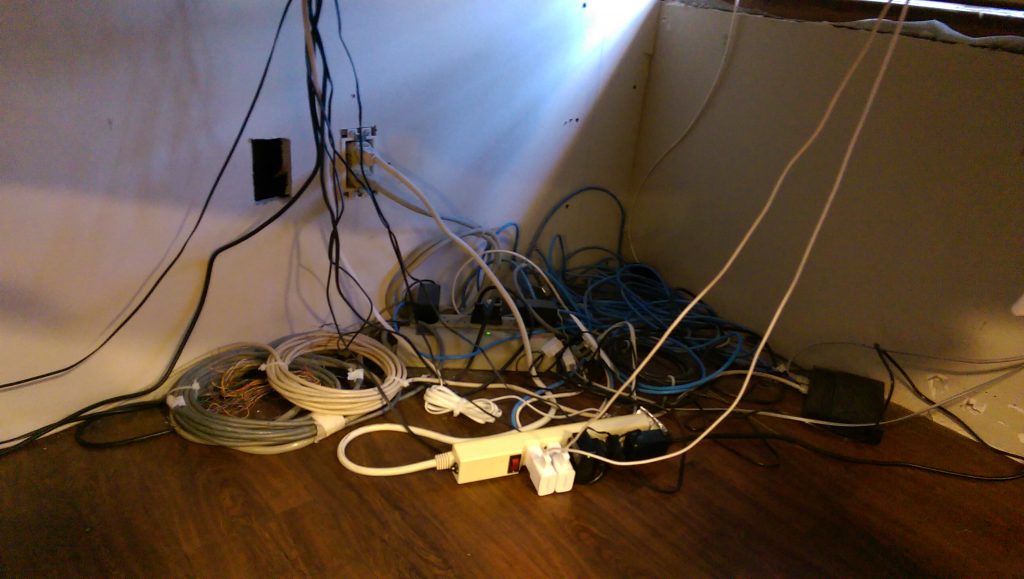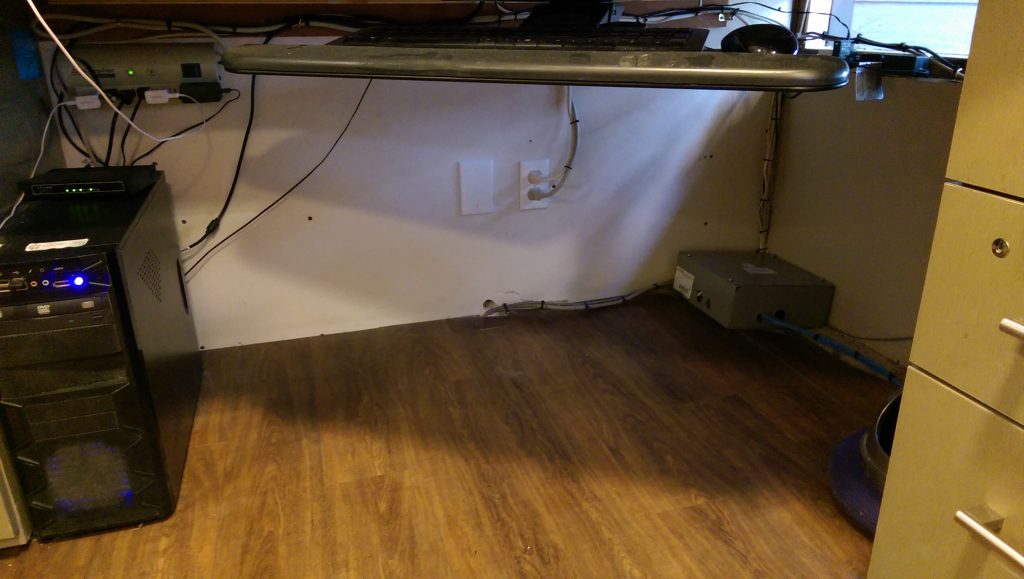What to watch out for:
- That moving cables, like a mouse and keyboard, have a full range of motion.
- You maintain access to the power bars so people can charge their personal equipment.
- That two-part cords (similar to laptop cables) are plugged in at both ends. Many of those devices, like Point of Sale machines, run on batteries, so everything will test fine until a few hours go by (and you’re long gone).
- Be careful when cutting “wrong” cable ties.
- Power down the equipment first so you don’t have to worry about unplugging something by accident.
- Do not wrap temporary or portable cables, such as USB charging cables, laptop cords, etc.
Helpful Tips:
- When wall-mounting something like a switch or power supply, photocopy the back so that you have the exact template.
- Make sure the mounting screws are the right length. Some cabinetry has indents, so checking on the edge may not be sufficient. Screws get 90% of their “bite” in the first three threads-shorter is almost always better.
- Pilot holes make your life significantly easier.
- Move equipment like monitors, keyboards, mice, and speakers to their furthest spot so you do not accidentally shorten their range.
- Use a Velcro tie or a releasable zip tie until you know all the cables are in the right place.
- Make sure you power up the computer and test it once you’re done!
Cables.
Every computer has more than you can imagine. Even my laptop has a power cable, a charging cable for my phone, and wireless dongles for 802.11ac, the wireless mouse, and a 64G thumb drive. That’s the best case you’re likely to encounter.
When you get a workstation with multiple monitors or a server with redundant connections, you are going to have monitor cables, mouse and keyboard, Ethernet, phone lines, USB cables to specialized equipment, and anything else you can imagine. My workstation has dual monitors, an oscilloscope, a microphone, a USB cable to get the wireless KB and mouse transponder closer to the work surface, an Ethernet connection, a power cable, monitor power cords, three land-line phones, a switch, two power bars, and it sits next to a server that has a power cord, two Ethernet switches (and other peripherals that don’t get used very often.)
Most of the time, cables are sitting and inert. Nevertheless, they get moved just a little bit every time they get kicked, pushed, resorted, coiled, and the conductors inside are tiny and can break with repeated flexing. (Even in-wall cables can break due to house settling or temperature fluctuations!) With a bundle of cables, pulling one cable can cause stress on other wires and break the connection. If the power bars are on the ground, a badly-placed tap with your toe can shut down your computer unexpectedly.
Here’s a client that had some cables sitting under their desk. They had problems sending faxes from a nearby machine.

Not only is there a good chance of physical damage due to the cables being underfoot, it is exceedingly difficult to find out what, if anything, is broken. There might even be redundant cables in there. (In this case and one other recent one, there was a power cable lying in the pile of cables.) In the last year, every cable nest that I’ve coiled back has coffee on something, either a switch or a power bar, or cables. One drop of coffee can, obviously, destroy electronics.
By tidying up the cables we can fix four problems:
- Improve long-term performance and trouble-shooting. Problems become immediately obvious.
- Improve the morale of whoever is working at that computer. Higher morale = longer retention times and higher productivity.
- Shorter and less frequent downtimes. Cables can be replaced less often and ports and adapters will not get damaged.
- Increased storage space. Leases, rent, and construction are not free, and taking up even 5 square feet of space holding a tangle of cables can be costing you hundreds of dollars a year.
Here is the same workstation, with the cables against the wall, the spares coiled in a box, and nothing that can be damaged through normal workflow. In addition, there is now space to hold a box or two of toner, printer paper, or recycling/garbage cans.

The fax machine phone jack worked perfectly afterward.